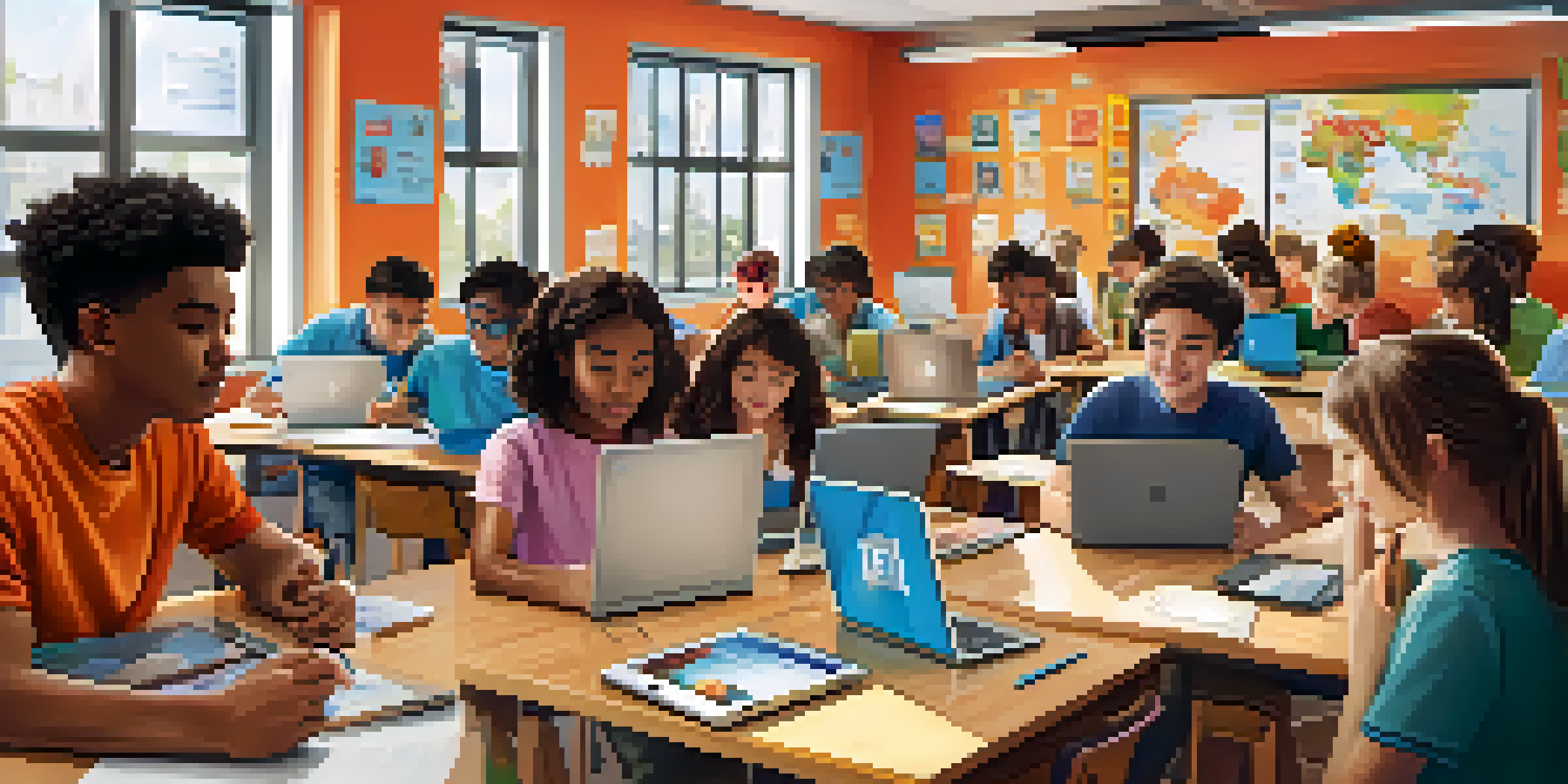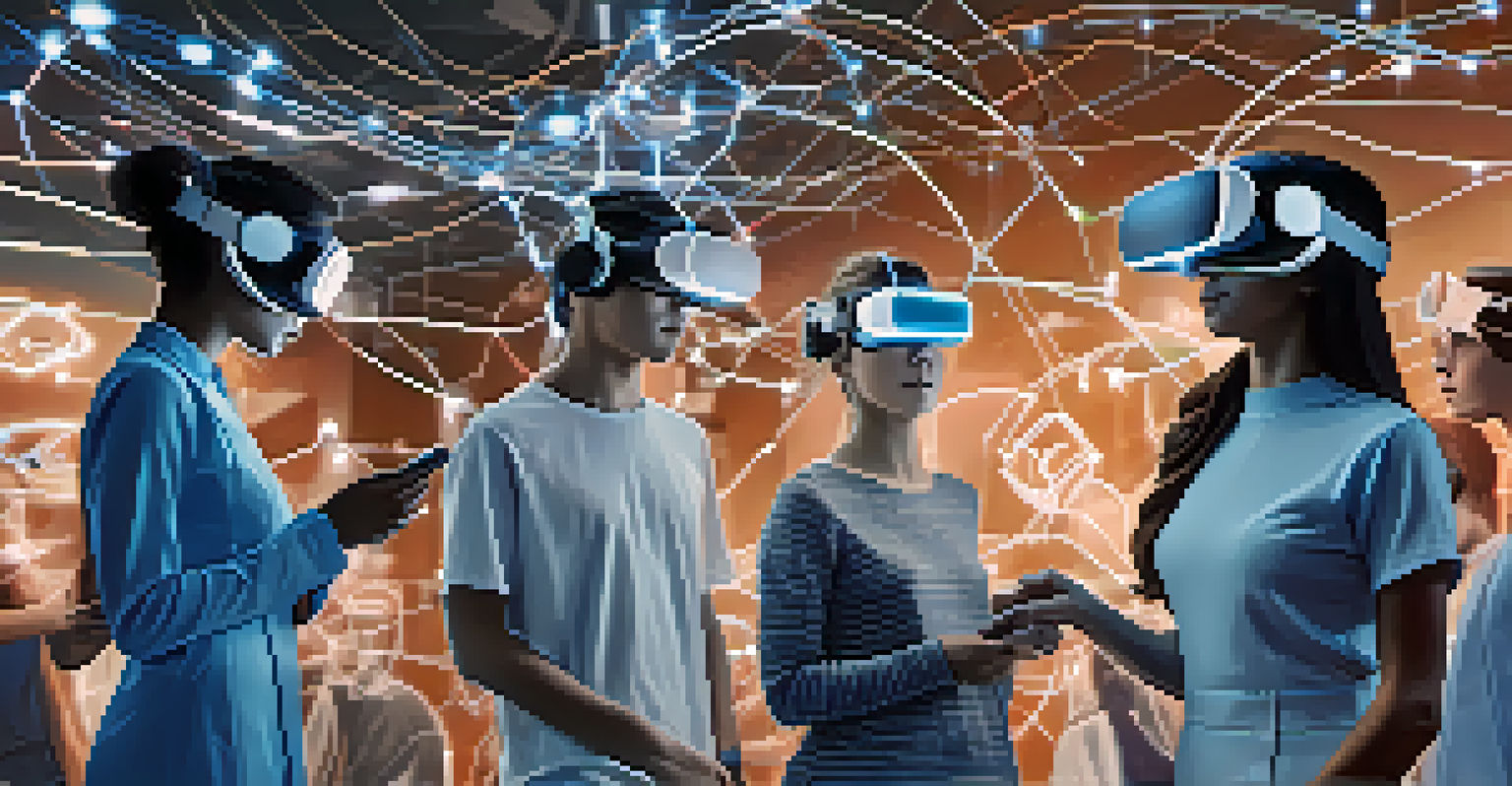Creating Interactive Learning Experiences with Social Media

Understanding the Role of Social Media in Education
Social media has transformed the way we communicate and connect, making it a powerful tool in education. Platforms like Facebook, Twitter, and Instagram offer unique opportunities for interaction, collaboration, and engagement among students and educators alike. By understanding these platforms, educators can leverage social media to create dynamic learning experiences that resonate with today's tech-savvy learners.
The great thing about social media was how it gave a voice to voiceless people.
For instance, a simple Twitter hashtag can turn a mundane classroom discussion into a global conversation. Students can share their thoughts, ask questions, and even interact with experts in real-time, enhancing their learning experience. This connectivity fosters a sense of community and encourages learners to see education as a shared journey rather than a solitary task.
Moreover, social media allows for diverse content sharing, from videos to infographics, catering to different learning styles. Visual learners might thrive on platforms like Instagram, while others may engage more deeply through discussions on Facebook groups. By tapping into these varied modalities, educators can create a richer, more inclusive learning environment.
Designing Engaging Content for Social Media Learning
Creating interactive content is key to keeping students engaged on social media. This means moving beyond static posts to include polls, quizzes, and live Q&A sessions. For example, using Instagram Stories to conduct quick polls can instantly gauge student understanding and spark further discussion, making learning feel more interactive and less formal.

Additionally, incorporating multimedia elements like videos and infographics can make complex subjects easier to digest. A short tutorial video explaining a challenging concept can be far more engaging than a lengthy textbook excerpt. This approach not only captures attention but also encourages sharing, amplifying the learning experience beyond the classroom.
Social Media Enhances Learning
Platforms like Twitter and Instagram create interactive and collaborative learning experiences for students and educators.
It's also important to consider the timing and frequency of posts. Regular updates can maintain momentum, while well-timed content can align with current events or class discussions, making lessons feel relevant and immediate. By staying attuned to the learners' needs and interests, educators can craft content that not only informs but also excites.
Fostering Collaboration Through Social Media Platforms
Collaboration is a vital aspect of learning, and social media can facilitate this in unique ways. Platforms like Google Classroom and Slack allow students to work together on projects seamlessly, sharing ideas and resources in real-time. This collaborative spirit can lead to deeper understanding and a sense of ownership over the learning process.
Education is the most powerful weapon which you can use to change the world.
For example, a group project on environmental issues can be enhanced through a dedicated Facebook group where students can share articles, discuss findings, and plan their presentations. This not only promotes teamwork but also encourages students to engage in peer learning, where they can learn from each other’s insights and expertise.
Furthermore, creating opportunities for cross-class collaborations or even inter-school partnerships can broaden perspectives. Students can exchange ideas with their peers from different regions or cultures, enriching their learning experience and fostering a greater appreciation for diversity.
Encouraging Student Voice and Agency in Learning
Social media provides an excellent platform for amplifying student voice, allowing learners to express their opinions and share their work with a wider audience. Encouraging students to create content—be it blog posts, videos, or podcasts—can empower them to take ownership of their learning. This agency is crucial for fostering motivation and engagement.
For instance, a student-led Instagram account dedicated to sharing science experiments can inspire creativity and curiosity while allowing students to showcase their learning. This not only builds confidence but also encourages them to reflect on their learning journey and articulate their thoughts effectively.
Engagement Through Interactive Content
Using multimedia elements and interactive polls can significantly boost student engagement and understanding.
Moreover, by providing students with opportunities to lead discussions or share their perspectives on social media, educators can cultivate critical thinking skills. This practice encourages learners to consider multiple viewpoints and develop their arguments, essential skills in today's interconnected world.
Assessing Learning Outcomes via Social Media Engagement
Assessing student learning has traditionally been a more formal process, but social media offers innovative ways to gauge understanding and engagement. Teachers can use analytics tools to track participation in discussions, the quality of contributions, and overall engagement levels. This data can provide valuable insights into student progress and areas that may need more attention.
For example, by monitoring the frequency and nature of responses to discussion prompts on platforms like Twitter, educators can identify students who may be struggling or excelling in certain areas. This real-time feedback can inform instructional adjustments, ensuring that all learners receive the support they need to succeed.
Additionally, incorporating self-assessment through social media can empower students to reflect on their learning. Encouraging students to post about their learning experiences and challenges can foster a culture of transparency and growth, allowing both educators and learners to celebrate achievements and identify areas for improvement.
Navigating Challenges: Privacy and Professionalism
While social media offers many benefits for interactive learning, it also presents challenges that educators must navigate carefully. Privacy concerns are paramount, as students may be hesitant to share personal information in a public forum. Establishing clear guidelines and boundaries around what can be shared and how to interact online is essential for creating a safe learning environment.
Moreover, educators must model professionalism in their social media interactions. This includes maintaining a respectful tone, being mindful of content shared, and treating all students fairly and equitably. By setting a good example, teachers can instill a sense of responsibility in students, helping them understand the importance of their digital footprint.
Navigating Privacy in Education
Establishing clear guidelines and teaching digital citizenship are crucial for ensuring safe and responsible use of social media in learning.
Lastly, it’s crucial to educate students about digital citizenship. This encompasses understanding online etiquette, recognizing reliable sources, and protecting one’s personal information. By equipping students with these skills, educators can help them navigate social media responsibly, ensuring that it serves as a positive learning tool.
The Future of Interactive Learning with Social Media
As technology continues to evolve, so too will the ways we use social media for interactive learning. Emerging platforms and tools will likely offer even more creative ways for educators and students to connect and collaborate. Staying abreast of these developments will enable educators to harness the full potential of social media in education.
For instance, virtual reality (VR) and augmented reality (AR) are beginning to find their place in social media, offering immersive learning experiences that can captivate students’ imaginations. Imagine a biology class where students can explore the human body in 3D through a social media platform—this could revolutionize how concepts are taught and understood.

Ultimately, the future of interactive learning with social media hinges on adaptability and innovation. By embracing these changes and being open to new ideas, educators can create engaging, effective learning experiences that prepare students for the challenges of tomorrow's world.